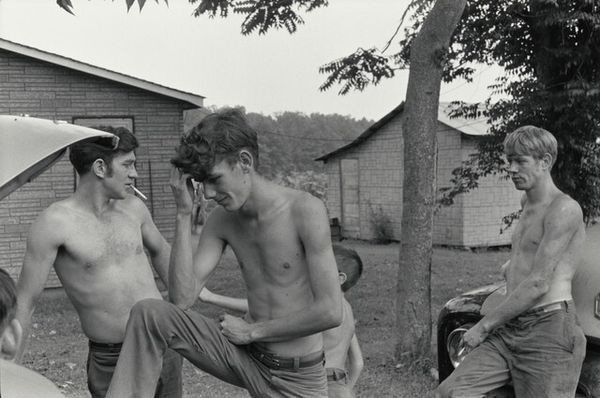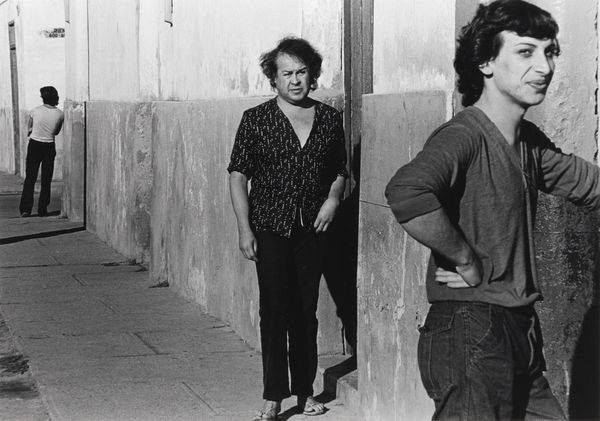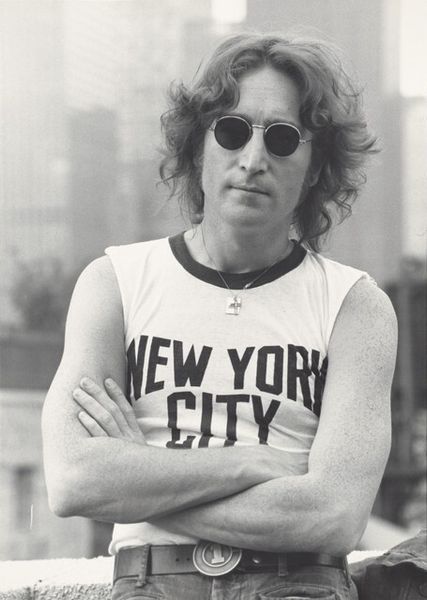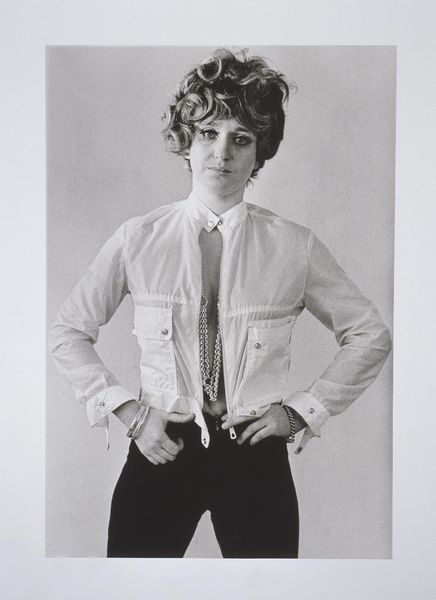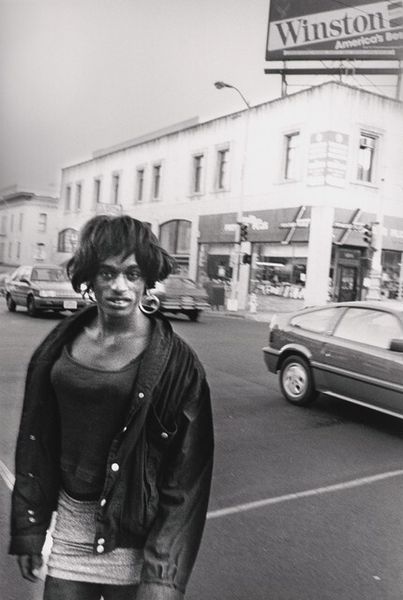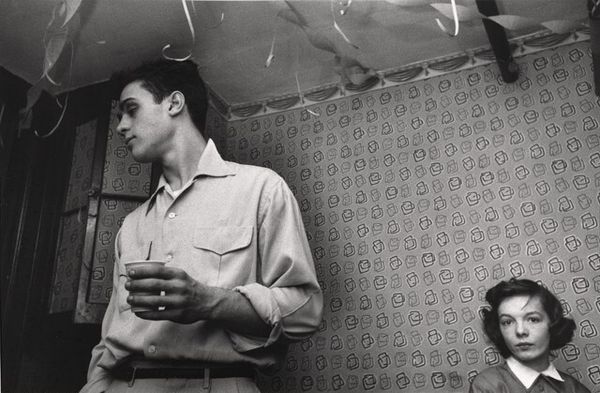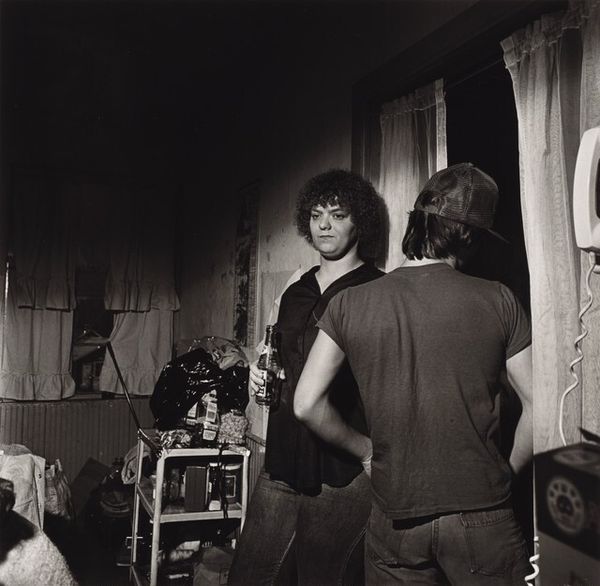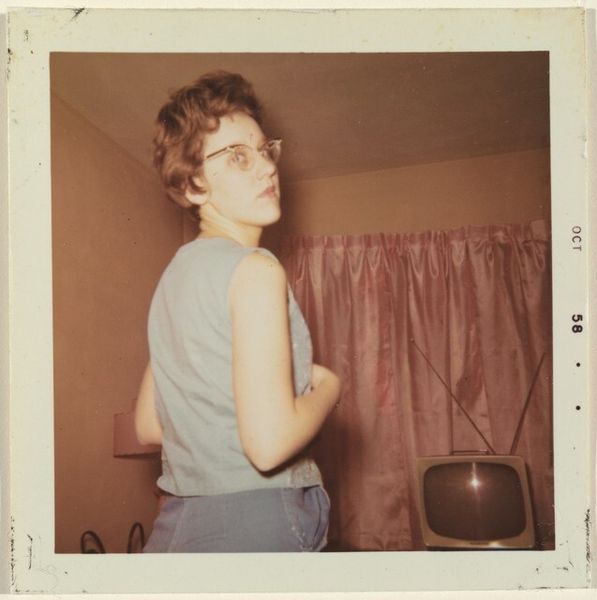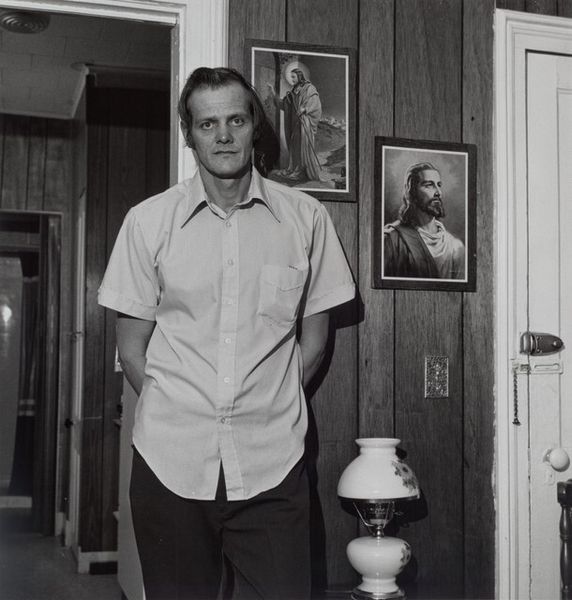
photography, gelatin-silver-print
#
portrait
#
black and white photography
#
street-photography
#
photography
#
black and white
#
gelatin-silver-print
#
monochrome photography
#
monochrome
#
realism
Dimensions: image: 30.3 × 44.6 cm (11 15/16 × 17 9/16 in.) sheet: 40.3 × 50.6 cm (15 7/8 × 19 15/16 in.)
Copyright: National Gallery of Art: CC0 1.0
Curator: Larry Fink’s "Fat Sabatine, Martins Creek, Pennsylvania" was captured in 1978, part of his exploration into social landscapes and class distinctions through black and white photography. Editor: Immediately, there's a melancholic vibe—almost like a silent movie still. That averted gaze and the unkempt background hint at a story simmering just below the surface. Curator: Fink is known for his ability to highlight everyday scenes, focusing here on a specific geographic location and arguably, the material conditions of its residents. He's keenly interested in labor, the environment and its direct impact on people's lives. Editor: It's interesting you say that. For me it evokes… nostalgia, actually. It reminds me of my Uncle, strangely enough. A guy who worked hard, simple pleasures, a little world-weary, staring out into the distance contemplating some elusive element beyond my grasp at the time. Curator: Exactly. Fink frequently shot gelatin silver prints and was able to capture a particular aesthetic that often emphasized shadow and the tangible grittiness. This realism is key. It roots the image in a certain place, time and the specifics of economic activity. Editor: You know, beyond that somber first impression, there's something quite beautiful. The textures—the rough dirt, the man’s shirt, the gentle curve of his hair—it all sort of holds your attention in unexpected ways. He somehow turns a kind of visual poem to the seemingly mundane. Curator: I would agree that it finds beauty. Fink intentionally challenges the conventional divisions between documentary and artistic representation, pushing us to reflect on consumption, the nature of the medium, and what stories black and white can continue to tell. Editor: Right, which perhaps speaks to the broader human story within this very particular moment in Pennsylvania. There’s a universality despite the specificity. Well, on that rather pensive note... Curator: Indeed. It’s a great example of the photographer engaging in quiet conversations about economic identity through form, line and perspective.
Comments
No comments
Be the first to comment and join the conversation on the ultimate creative platform.

